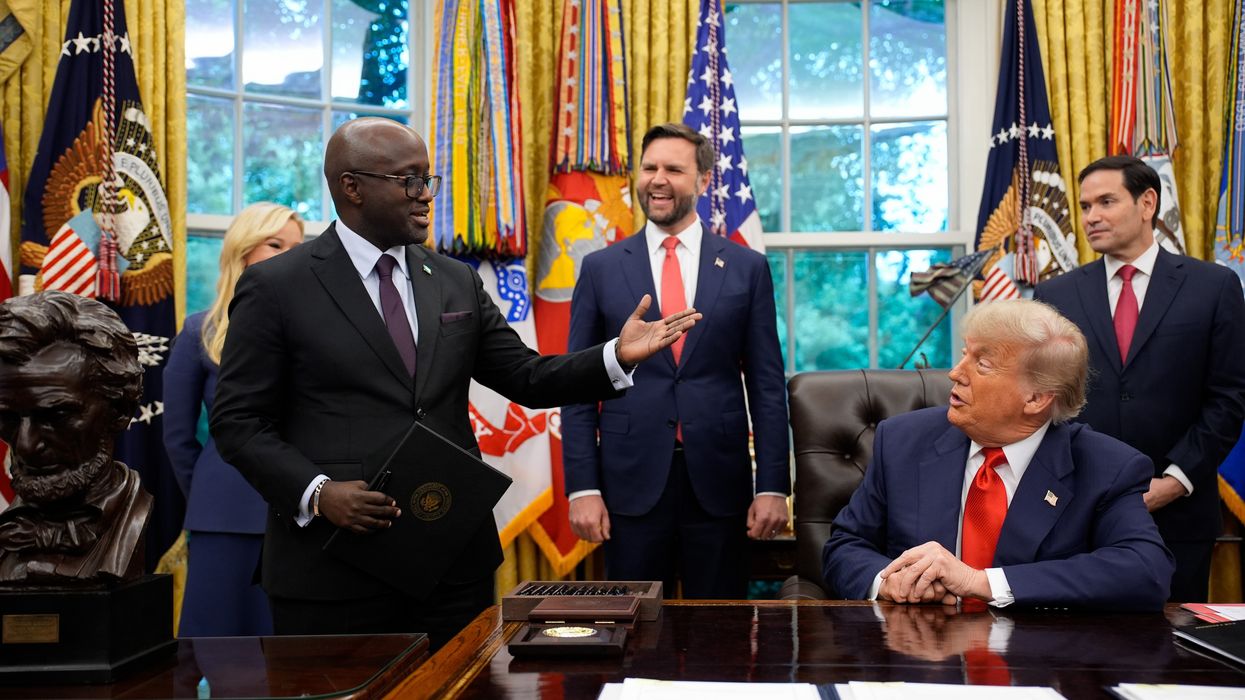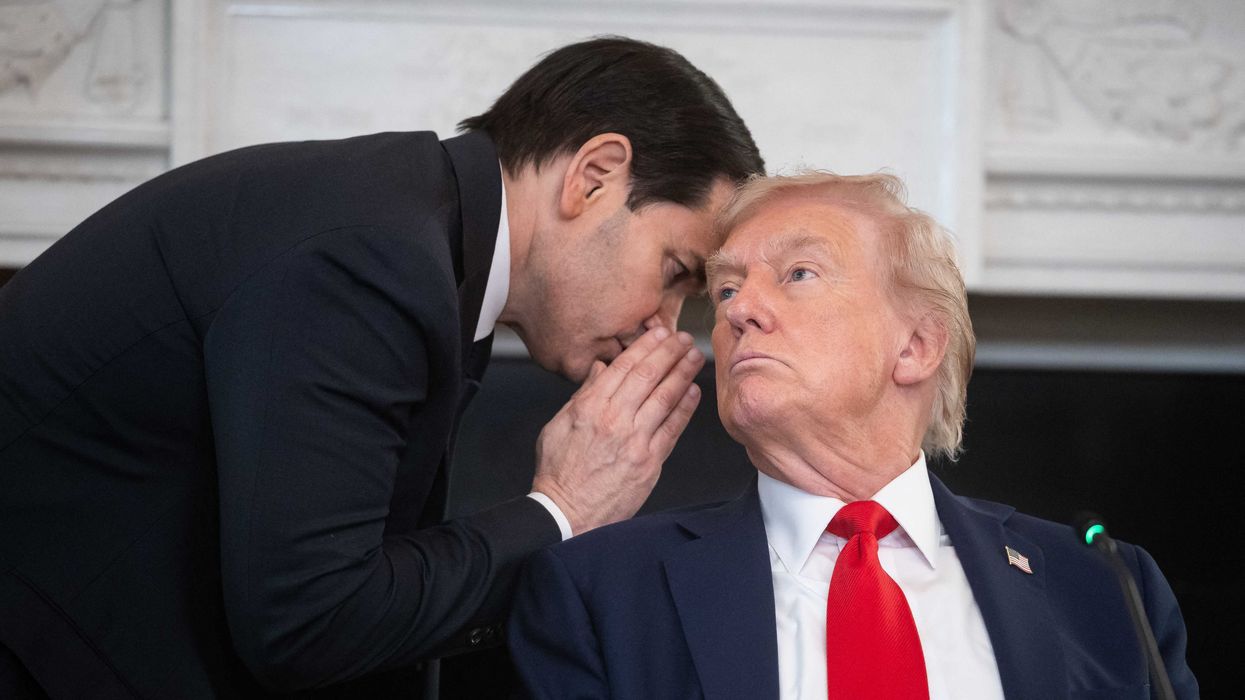Starvation works. At the end of the day, famine decided the outcome of the Ethiopian civil war. Two years after the outbreak of hostilities, Ethiopian Prime Minister Abiy Ahmed and Eritrean President Isaias Afewerki forced the Tigrayan leadership to forsake their political claims and instead negotiate to save their people from famine.
Two agreements were signed, one in Pretoria, South Africa, on November 2 and the second in Nairobi, Kenya on November 12. They are poorly drafted and riddled with ambiguity, reflecting the rush. But the bottom line is that the Tigray People’s Liberation Front (TPLF) has accepted to dismantle the regional Government of Tigray, which it headed, and to disarm the Tigray Defense Force (TDF), in return for ending the fighting, receiving humanitarian aid and the removal of “foreign forces” — understood to mean the Eritreans.
The Pretoria and Nairobi talks followed the pattern of the last eleven months’ negotiations, with each of the protagonists sticking to their scripts. Since January, on each occasion, the Tigrayans have offered a concession, the Federal Government has accepted it, Eritrea has silently undermined it, Abiy has reneged on his commitment, and the international community — led by the U.S — has not imposed any price for this backtracking. At every stage, fighting has continued, with the TDF winning most of the battles, but the weapon of starvation exacting its inexorable toll — by the end of August, hunger and disease had killed one tenth of Tigray’s 6 million population.
When the talks opened in Pretoria on October 24, one well-placed U.S. official described the expectations as “lower than low.” The outcome surprised mediators and observers.
The joint Ethiopian-Eritrean forces had hoped for a military fait accompli by that date, and again been frustrated. Nonetheless, 60 days of relentless frontal assaults had the intended effect of using up the TDF ammunition, to the point where the TDF strategy of defending population centers was no longer viable. The offensive had a staggeringly high human cost. The Chief of Staff of the Ethiopian National Defense Force (ENDF), Field Marshal Berhanu Jula, unguardedly said that his army had lost 136,000 dead since August. If we add fatalities among the TDF, Amhara militia and Eritreans, a reasonable estimate for this round of fighting is 350,000 dead.
For the Tigrayans, the bravado of the resistance rhetoric, and the continuing tactical successes at inflicting high casualties on the attacking armies, masked the brutal arithmetic of an unsustainable defense. The TDF could continue as a mobile force, but only by exposing their people to the depredations of occupying armies whose intent, they believed, was genocidal.
The TPLF leadership had not shared their strategic calculation with their people. Their practice has been to achieve a fait accompli and then explain it politically. Since the war began, they have made no effort at political consultation. Traveling to Pretoria to offer peace was a huge political gamble for the delegation, led by spokesman Getachew Reda and military advisor Tsadkan Gebretensae.
Eritrea was not invited to the peace talks. The security pact between Isaias and Abiy is still secret, and the rare statements from Asmara are cryptic.
The Ethiopian delegation was headed by Abiy’s security advisor Redwan Hussein. Abiy was under pressure from the AU and western countries to at least go through the motions of negotiating — not least because the treasury is empty. Redwan came with a demand that the Tigrayans surrender.
The three members of the African Union Panel—the former Nigerian president Olusegun Obasanjo, former Kenyan president Uhuru Kenyatta, and former South African deputy president Phumzile Mlambo-Ngcuka—simplified the agenda by putting “cessation of hostilities” as the first and only item. In technical parlance, a cessation of hostilities is an immediate end to active combat, to be followed by a more complex operation of a ceasefire, which typically involves strict rules on prohibited and permitted actions, and third-party monitoring. Redwan simply renamed his document “Permanent Cessation of Hostilities.”
In the game of brinkmanship, the Tigrayans had blinked first. They took the initiative to insist, not only on a cessation of hostilities, but a peace agreement. They took an expanded version of Redwan’s text as the basis for negotiation. This was the speediest way of moving to an agreement, but it involved painful concessions.
The core of the agreement is establishing federal authority over Tigray. The TPLF-headed regional government is dissolved and a new one will be elected. The constitutional order is to be restored. Ironically, the Tigrayans could hail this as a victory, as they were fighting to prevent Abiy overturning the federal system in favor of a unitary one. Abiy’s Amhara allies may yet be outraged at this, along with the implication that the pre-war constitutional boundaries of Tigray should be restored, reversing Amhara annexation of key territories. But for now the optics are all in favor of Addis Ababa.
The most contentious element in the agreement is a promise to disarm the TDF. The timetable and process are impractical. In Pretoria, the Tigrayans developed a supplementary document — an implementation matrix — that provided detail and sequencing, but, at the last moment, the federal side rejected it. At that point, the Tigrayans faced the choice between walking away or accepting a woefully one-sided main text. They chose to sign.
The compromise was that military commanders from the two sides would draw up an implementation plan. That meeting took place in Nairobi from November 7-12.
The AU commission marginalized the international community. In contrast to standard practice for AU-led peace processes, there was no partnership with the UN, whose experts spent their days idly in the hotel, while the European Union — the AU’s most established partner and principal funder — was excluded altogether. The only active observer in Pretoria was U.S. Special Envoy Mike Hammer, but Redwan played the familiar game of complaining loudly that the U.S. was biased in favor of Tigray.
The guns fell silent—mostly—over the following days. The exhausted armies must have welcomed the end to the bloodshed.
The biggest issue in the two agreements is Eritrea, named only as “foreign forces.” Abiy has long insisted that he alone would ensure Isaias withdraws his troops. The Tigrayans—along with the mediators and the U.S. — don’t trust him to do that. The Nairobi agreement clarified that TDF disarmament would be “concurrent” with the removal of “foreign forces.”
The peace deal ultimately stands or falls on this question. Isaias has enormous leverage over Abiy. He holds several ENDF divisions hostage in Eritrea, he has agents all over Ethiopia — including, it is reported, in Abiy’s own security detail — as well as allies in Amhara and Afar regions. Until now, no one — including the U.S .— has made it more painful for Abiy to maintain his ties to Isaias than to repudiate them.
Isaias may have achieved his stated goal of destroying the TPLF as a political force, but his death squads murdered senior Tigrayan leaders last year and there is no reason to suppose that they have changed their modus operandi. Eritrean troops are pillaging Tigrayan towns, killing and raping, in recent weeks. No one expects Eritrea to withdraw willingly. The TDF won’t disarm until they’re gone.
The ENDF is shattered and cannot dictate anything to either the Eritreans or the TDF. Abiy and his generals will need to make a choice which of the two is their partner.
A second flaw in the Pretoria agreement was ambiguity over lifting restrictions on humanitarian aid. In the days after the signing, the government allowed aid only to those places it controlled. They said that aid would go to other places — such as the capital Mekelle — only when its own officials were back in office.
If the government’s intention to use hunger as a weapon were ever in doubt, these actions removed any uncertainty. There were no excuses of active fighting. Pressed by the mediators and the international community, Redwan conceded in Nairobi that aid should flow at once, which Obasanjo said should have happened “yesterday.” As of November 15, it still hadn’t happened.
The agreements put the political clock back more than two years. Many Tigrayans — at home and in the diaspora — are angry at what they see as a political surrender. The agreement was met with howls of dismay with some, including the TPLF’s own central committee, publicly disavowing it.
Many Amharas are worried at what they fear is a sell-out of their own political and territorial claims. There are reports of Amhara forces rounding up and executing Tigrayans in the areas they recently occupied.
Meanwhile, the ENDF is relocating its forces, including its drones, to the escalating war in the Oromo region to the west, east, and south of Addis Ababa. As reports come in of new brutalities, Ethiopians are asking whether the truce with Tigray means that Abiy will use the same military tactics against the Oromo Liberation Army and other insurgents.
Abiy is following his familiar script, appeasing those who put most pressure on him at any particular moment. Although the formal monitoring and verification mechanisms in the agreement are weak, the international apparatus to ensure compliance exists. Satellites can inspect troop movements, and UN agencies can report aid deliveries and data on hunger. Only the western powers, led by the U.S., can bail out Ethiopia’s desperate financial straits, and this is their opportunity to hold Ethiopia’s leaders to their word.
Abiy will be tempted to see the Tigray cessation of hostilities as tactical repositioning. For Tigrayans, it’s a matter of life and death. If the deal unravels, the Tigrayan leaders who risked their political capital on it will be discredited—and any path back to peace will be long and fraught.
















